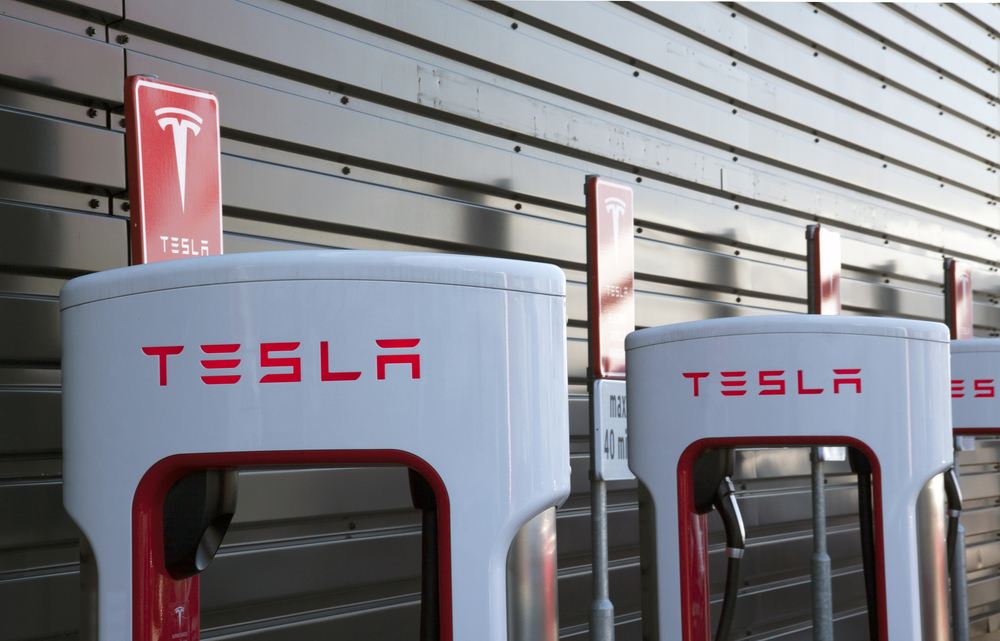As with several of its large-cap tech peers, Tesla (TSLA) stock has driven in reverse amid the recent pullback in tech. The shares have fallen more than 5% in the past thirty days, compared to 2.6% decline in the S&P 500 index. But when looking into the numbers, Tesla’s pullback may be short-lived.
The luxury electric vehicle company is set to deliver its financial results for the third quarter fiscal 2023 on Wednesday after the closing bell. The recent decline in the stock coincides with the fact that analysts have lowered the company’s third-quarter earnings estimates on the heels of Tesla reporting what some are calling downbeat delivery data for the period earlier this month. Some estimates, ahead of the Oct. 2 delivery report, had been lowered to 456,000 from 473,000 at the end of July.
The company, meanwhile, delivered 435,059 vehicles, which was down 6% sequentially. In an effort to boost deliveries, the EV giant has been in a vehicle price war for most of 2023 and has lowered its vehicle prices by roughly 25% year-over-year. The company is still anticipating a volume of 1.8 million vehicles for the year. However, with fourteen brand new EV models entered the fray during the third quarter, more competition is emerging.
Tesla, meanwhile, is the only EV maker that consistently makes money. In this area, the company has little competition. Despite very aggressive reinvestment in the business, Tesla still has a massive cash hoard with relatively no debt on the balance sheet. All of this is coupled with robust free cash flow. The company has $23 billion in cash and just $900 million in low-interest debt. Until these fundamentals change, Tesla stock should be owned, not trade.
In the three months that ended September, Wall Street expects The Austin, Texas-based company to earn 74 cents per share on revenue of $24.16 billion. This compares to the year-ago quarter when earnings came to $1.05 per share on revenue of $21.96 billion. For the full year, ending in December, earnings are expected to decline 17.7% year over year $3.35 per share, while full-year revenue of $99.13 billion would rise 21.7% year over year.
The disparity between projected full-year revenue growth and profit decline is something Tesla critics often point to as reasons to avoid the stock. As noted, the company has enacted a series of price cuts aimed at boosting sales. The recent price cuts are driving in new buyers, along with record vehicle registrations. But the price cuts have also pressured both the average revenue it recognized per vehicle, and also the company’s profit margin profile.
In the second quarter, Tesla’s results surpassed estimates on both the top and bottom lines, with year-over-year revenue growth rates of 47% and 20% in earnings. With net income of $3.14 billion on revenue of $24.9 billion, the net profit margin was 12.6%. What’s more, the company posted a 62% jump in free cash flow. However, the net profit margin declined to 12.6%, from 15.4% in the year-ago quarter.
Aside from the recent price cuts, increased competition from traditional automakers entering the EV market affected Tesla’s margins. But as noted, the fact that Tesla is profitable in the EV space at all and generates positive free cash flow is a testament to the company’s management and its working strategy. Plus, Tesla’s future growth will be in its full self-driving software and charging network which will further differentiate it from competitors.
As for the stock, the company’s ability to innovate and it’s awe inspiring cutting-edge technology will continue to place Tesla as the dominant player in electric vehicles market.
The views and opinions expressed herein are the views and opinions of the author and do not necessarily reflect those of Nasdaq, Inc.
Image and article originally from www.nasdaq.com. Read the original article here.

